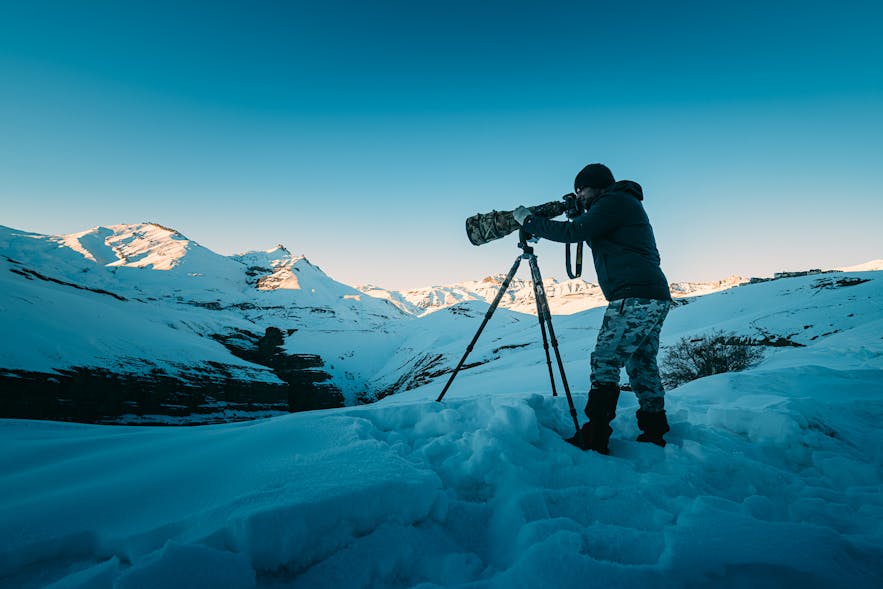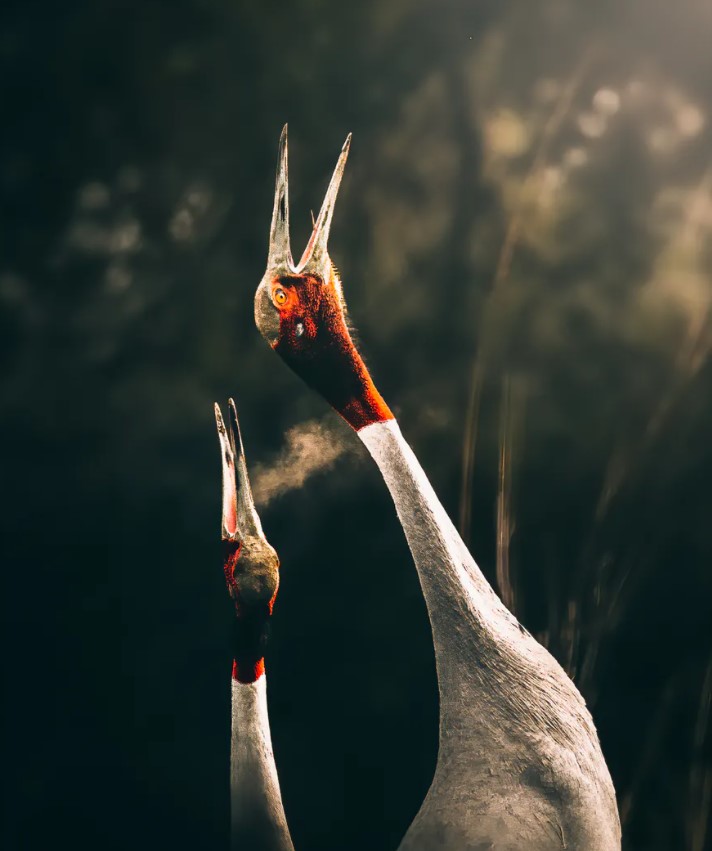Riddhi Mukherjee, a wildlife photographer and explorer, has traveled over vast distances to various places such as Assam, the Sundarbans Biosphere Reserve, and other national parks in India. His work, published in renowned magazines such as Lonely Planet, National Geographic, BBC and Sanctuary Asia, captures compelling images of the world around him.
This month, I had the honor of interviewing Riddhi about his journey and the important role photography has played throughout his career and life.

1. When did your interest in photography grow?
I come from a family of nature lovers. My father, an opthalmologist and surgeon by profession, is a keen photographer and nature lovers. All my school holidays were spent in forests and mountains, my fondest childhood memories revolve around days out in nature under the open sky. I learnt photography from my father, I was gifted a pro SLR at a very young age by my parents, and quickly it became an obsession. At first, it was my way of documenting nature, it still is. As an introvert kid that was my way of showing the world what I see and what I feel. I’m still doing that.
2. What or who inspired you to become a wildlife photographer?
My parents. They still inspire me, push me to make better images and learn about nature more thoroughly.
3. What was your childhood like? Did it in any way propel you toward your career?
I was an introvert. I always liked many forms of art, I always saw art as an way of expressing myself.Be it writing, painting, making images – I always liked them all.I used to visit woodlands near our home and go on treks with my father and uncle, and visit national parks all over India with my family. Everyone, in our family, loves natures and all creatures big and small. That love and compassion was passed onto me. Everything I am today, is because of my family.
4. Can you tell us about the most memorable wildlife photo you have ever shot and what made it so special?
The most memorable would be the sighting of Indian Grey Wolf in Sundarbans Biosphere Reserve. It was the first-ever document of the species in that habitat, and a big surprise to us all since the wolf lives in a very different habitat, mainly dry deciduous forest and grasslands. The news of the sighting along with the photographs was covered by national and international media and many leading wildlife magazines.
5. Were there any funny or unusually interesting moments you had with the animals?
I really can’t recall any funny moments. Somehow all of the sightings I’ve had were intense. All wildlife sightings are interesting as every individual is different and if someone looks closely enough, with compassion, will find something extremely interesting in every encounter.
6. What in your opinion makes your images so successful?
I’ve no idea if my images are “successful” or not. I have been extremely fortunate to receive the kind of love my images receive. I only post what I personally would love to see on an image sharing platform. Somehow, people connect with them. If there’s a style or a secret mantra, I’m completely unaware of it. I love the natural world and I try to portray wild beings with love, empathy and compassion – that’s all I can vouch for.
7. How long does it usually take until you get the “perfect shot”?
There’s no perfect shot. We all strive for perfection but we never achieve it. We live in an imperfect world. The beauty of nature and the whole universe is it’s not perfect. Coming to photography, a good picture can either take 5 seconds to make or 5 years. It’s completely relative. If I’m planning for a shot, I will not give up on it until it’s done, no matter how long it takes. Perseverance is the key. To get a “satisfactory shot” I can wait for n number of days.
8. Is there a specific animal you love to shoot? Why?
Tigers. Specifically, the swamp tigers of Sundarbans. There’s an enigma, a certain grace, a sense of majestic charisma that surrounds this big cat that attracts me to this particular species. Add myths and folklores to that, add a different swampy terrain which is hard to survive and thrive and you have the tigers of the Sundarbans. They will always be my obsession.
9. Do you believe wildlife photography affects conservation?
Yes, in a good way. The modern world, with all its rapid changes and drastically degrading natural resources, needs to protect nature more than ever. We are facing monsters like climate change and global warming and those are the Frankensteins we have made. We need to understand that unless we take our stand and actively join hands to protect Mother Nature, then we will be facing major issues. To do that, as wildlife photographers, we can approach it in two ways.
The first one is to document the beauties and the glories of our natural treasures. People only protect and take care of things that they love. If we, as artists, can make people fall in love with nature, our job is half done.
The other approach is to photograph conservation issues. We need to make people aware of what’s going on, what the threats are and how we can work together to take care of those threats. It indeed is very important that we, as wildlife photographers, adopt both approaches whenever necessary and spread awareness in whichever way possible. We are running out of time, very fast.
10. How does wildlife photography impact local communities?
Well, Wildlife photography means wildlife tourism. And tourism means, an industry around it, the locals being the major part of that industry. From the guides, drivers, forest department employees to the people who work at resorts or open shops near the forests, they all benefit from tourism. And that means directly or indirectly they are earning from the forest and the wildlife. And people protect their earning sources. Wildlife tourism is a major part of wildlife conservation in that sense, and also the locals live a better life if tourism flourishes in a particular place.
11.Whom do you look up to in the photography industry? Why?
Vincent Munier. His images are magical, in the truest sense of the word.
12. Which was the toughest photograph you have ever taken? Why?
It’s the snow leopard photograph. Mainly because of the extreme weather conditions and hard terrain.
13. What are your views on the man and animal conflict?
It will increase every day. If we can’t control the human population and spread awareness, we will wipe out every single wild animal, very soon.
14. How has the lockdown affected how you click pictures?
This is a very unfortunate and hard time for everyone, especially for us who are used to the outdoor life. At first, it brought everything to a complete halt. The stagnancy, in the beginning, was extremely frustrating, to be honest. Then, I started researching about the subjects and places I would like to photograph next and that kept the flame in me alive. We also have a small home garden and a lot of birds come here every day. I started experimenting with them, trying to photograph them in different ways. These things, for now, are keeping me on track.
In India, the lockdown has eased a bit now and the national parks, like Sundarbans, are open. I’ve started going to the parks.Hopefully everything will get back to normal soon.
15. I see that a lot of the pictures you have taken are shot in Sundarbans. What is it about Sundarbans that draws you there?
The swamp tigers are one of the least studied and most misunderstood big cats. To start with, these cats are super elusive. So, we had to study their movement pattern and behaviour very minutely at first, to get a proper sense about the swamp tigers and thus, to establish a tracking/anticipating method which will allow us to get better sightings. A few people, including me, had to spend a lot of time and effort in the tidal forest only to understand their movement pattern – this is how elusive and rare these cats are. Also, understanding the terrain and the set of rules one has to follow in order to get even a glimpse of the swamp tiger played a crucial part.
Once those were established and brought into practice, we started getting success in the form of regular sightings. Armed with cameras, we started to photograph various aspects of their lives. It all ultimately comes down to showing respect to nature and understanding the species you want to photograph. It’s the same with the swamp tigers as well. I’ve been able to document many behavioural aspects of their secretive life. There is still a lot of work left, and we can only complete that with rigorous dedicated fieldwork. Apart from the tigers, Sundarbans is a biodiversity hotspot. And the forest is extremely beautiful.
I haven’t had any formal training. I learnt from my friends and senior photographers and practised whatever they taught me. I learnt from the mistakes I have made, I learnt by seeing images of leading photographers. It was a long journey and I’m still learning.
17. What are the main challenges that you face as a wildlife photographer?
Access. Access is the key, and is the challenge.
18. What animal would you most like to capture that you haven’t already?
The Polar Bear. They are so beautiful!
19.What would you advise amateurs who are keen on developing their interest in wildlife photography?
For photographers who are just starting out, I would like to share a quote of Ansel Adams, “you don’t take a picture, you make it”. Learn about composition, learn about light, learn about your tools and shooting techniques. Study the history of the art of photography. For wildlife photographers, it is also extremely important to learn about flora and fauna and natural history. To be a good nature photographer, you have to be a good naturalist first. And keep practising. As far as I have seen, there is no substitute for hard work and raw passion.

What a lovely interview, shows us the love wild life photographers share for their animal muses…